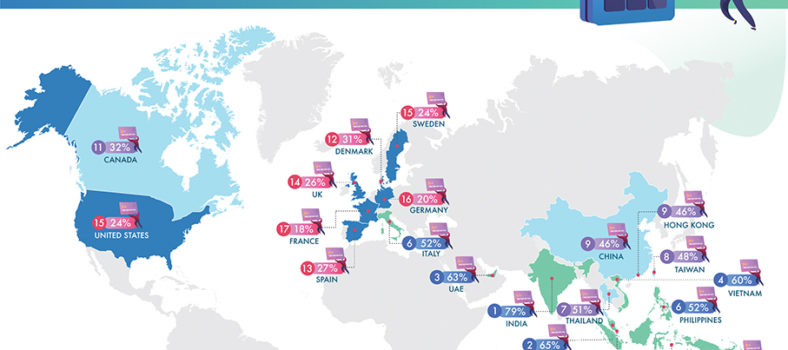 By Mark Halpern, CFP, TEP, MFA-P
By Mark Halpern, CFP, TEP, MFA-P
The COVID-19 pandemic added new levels of stress and uncertainty to the lives of most Canadians.
No corner of society worldwide has been left untouched by the effects of the pandemic, especially the non-profit sector.
The pandemic hit charities on all fronts. The weakening economy cut donations while government restrictions on social gatherings shut down fundraising events. Even as charities cut costs, close offices, and lay off staff, they are being stretched further as demand for their services soars.
Raising money is more challenging than ever in these difficult times, so communicating effectively with donors is more important than ever.
Fundraisers should improve communications with donors and make them aware of many strategies available to help make giving easier.
Given the opportunity to support a favourite charity instead of sending their tax dollars to the government, your donors will be inclined to invest in good causes and also save a lot of tax.
When people understand they won’t run out of money — in fact, they will probably have more of it when they die than they have today — they realize the need to look after future taxes now, keeping money in the family instead of remitting it to the tax department.
We like to show people how to use that “never spend” money, that won’t impact their lifestyle, to preserve their wealth for their family and charities they are passionate about.
Many people donate to charitable causes to affirm their own values, like compassion for those in need, or a personal connection with a specific charity or cause. Donors often weigh the costs and benefits of giving, including intangible benefits for themselves, like the positive feeling one gets from being charitable, or looking good to others.
There is another great reason for people to give. It lowers their tax bills. When someone explains to them how to give generously and save on taxes, they become keenly interested in hearing the strategies available. There are many ways for donors to be generous, from a gift in their will or a bequest where a charity is named in their will, naming a charity as a beneficiary of their estate, donating marketable securities, or buying tax-exempt life insurance.
No two situations are exactly alike so there are no cookie-cutter solutions. All the moving parts working in harmony allow donors to be both philanthropic and tax advantaged.
Consider these strategies to improve donors’ finances:
Use marketable securities: A recent case
A successful business owner had a $2 million income tax liability.
Most of his assets were not liquid and he didn’t want to use cash on hand to pay the taxes. He had a stock portfolio worth $10 million, with a very low cost-base, so he was ‘pregnant’ with significant capital gains and understandably reluctant to sell any shares as that would trigger an immediate and additional tax liability.
We helped him create a Donor Advised Fund (DAF) at a Community Foundation. He donated $4 million of his stock to the DAF which created a charitable receipt of $4 million to offset the entire $2 million tax liability. Donating those securities to charity saved a further $1 million of capital gains taxes he would have incurred if had he sold the securities personally.
His DAF is legally required to annually distribute a minimum of 3.5 percent of its value to any number of registered Canadian charities. The professionally managed DAF earned a return of 10 percent on $4 million last year, or $400K. The interest earned by his DAF is non-taxable. We used a portion of that interest income, $200K, to fund the premiums on a new $10 million Joint and Last To Die Life Insurance policy, owned by his DAF.
His $2 million tax liability was entirely eliminated and became a charitable donation. Additional capital gains taxes payable of $1 million on the sale of the donated shares was turned into charity. A total charitable gift of $14 million was created. He will be remembered for creating a generous charitable legacy instead of giving a large sum to the tax department.
Benefit from life insurance while the are alive
Most people think the only benefit from a life insurance policy occurs when they die. This example illustrates how you they can benefit from life insurance while still alive.
Harold, a retired accountant in his mid-60s had a $500,000 life insurance policy he didn’t really need. He wanted to donate the policy to his alma mater, so we arranged for an independent actuary to determine its current value. Because Harold was now uninsurable (due to some health issues), the actuary valued the policy at $290,000. Harold donated it to the university, received a charitable donation receipt for the entire $290,000 value, and saved about $145,000 in taxes.
Going forward, he could have continued to pay the insurance premiums and received charitable tax receipts for the amounts paid, lowering his taxes in the future.
He really didn’t want to continue paying the premiums on his gifted policy, so the school (as happens is many such situations) found a generous donor who agreed to pay all the future premiums. The donor paying those premiums receives an annual charitable receipt for his donations, and along with Harold, was recognized by the university for their generosity.
Tax tip
Most Canadians donate to charity using cash, credit cards or a cheque. In truth, that’s the least efficient way to be philanthropic. If you have invested in the stock markets over the past 10 to 15 years, you undoubtedly have some appreciated securities with ‘pregnant’ taxable gains. Simply donate some of those shares and receive a charitable receipt for their full (appreciated) value and pay zero capital gains taxes on them.
Donate corporately
Donating personally provides you with an approximate 50 percent tax savings, but to get a bigger bang for your buck, donate funds corporately and enjoy a 100 percent corporate deduction. A corporation using marketable securities for a donation also doesn’t have to pay any capital gains tax. In this instance, the gains on the donated funds are credited to the company’s Capital Dividend Account (CDA) and can now be withdrawn tax-free and used for whatever purposes you want. Take the example of a marketable security with an original cost base of $10,000 that is now worth $50,000. Donating those shares produces a corporate deduction of the entire $50,000 value, eliminates capital gains tax of $10,000 on the sale, and adds a $40,000 credit to your Capital Dividend Account which you can now extract from your company tax-free.
Selling their business? Save taxes
If they are about to sell their business, this would be the year they will probably have their largest tax bill — the prefect time to consider making their largest charitable donation. They should consider donating to charity the amount of funds that will offset all or part of their tax bill and then use the credit that would be available in the Capital Dividend Account to buy some corporate-owned life insurance. Doing so will allow them to donate generously, reduce or eliminate their taxes, and the corporate-owned life insurance will ensure that their family is covered and reimbursed fully for all of their charitable good will.
CPP philanthropy
Create a large charitable gift using funds supplied by the government. A husband and wife, both 65, received CPP benefits totaling about $26,000 a year. That money gets taxed, invested and re-taxed again. They live in Ontario, didn’t need those funds to pay their bills, and pay tax at the highest marginal tax rate of 53.53 percent.
Using just the CPP benefit “never spend money” to pay the premiums, we structured a joint-and-last-to-die life insurance policy in the amount of $1.4 million. Their favourite charity is the beneficiary and will receive the insurance payout on the death of the second spouse. Alternatively, they could make the charity a beneficiary and create a donation receipt of $1.4 million, saving their estate about $700,000.
CPP Philanthropy™, presents additional ways to use those CPP benefits to fund your charitable aspirations and save a lot on taxes.
RRSPs and RIFs
If you are single, divorced, widowed or never married, the tax department will scoop up to 54 percent of your RRSP or RIF savings when you die, and probate fees can gobble up another 1.5 percent in Ontario. If you designate a charity as the beneficiary of some or all of your RSP or RIF, you can effectively eliminate the tax liability.
Our passion
We love helping generous people who don’t like high taxes. They much prefer to support their favourite causes using the money that would otherwise be going to the tax department. Our strategies allow that to happen.
Create your own family legacy
Donating to favourite charities can be emotionally fulfilling and financially rewarding, reducing your current or future tax load. It can also enable you to save more for those near and dear to you while creating a family legacy that will carry your name for many years to come.
Please keep in mind that the above strategies are not an “all or none” propositions, and not designed for do-it-yourselfers. Get professional help from experienced to navigate your available giving options. Don’t hesitate to contact us for a no-obligation consultation on your personal situation.
Mark Halpern is one of Canada’s top life insurance advisors, a Certified Financial Planner (CFP), Trust and Estate Practitioner (TEP) and CEO of WEALTHinsurance.com®. He helps successful Canadians in the areas of life insurance, estate planning, tax minimization and philanthropy, often converting tax liabilities to charitable gifts.




